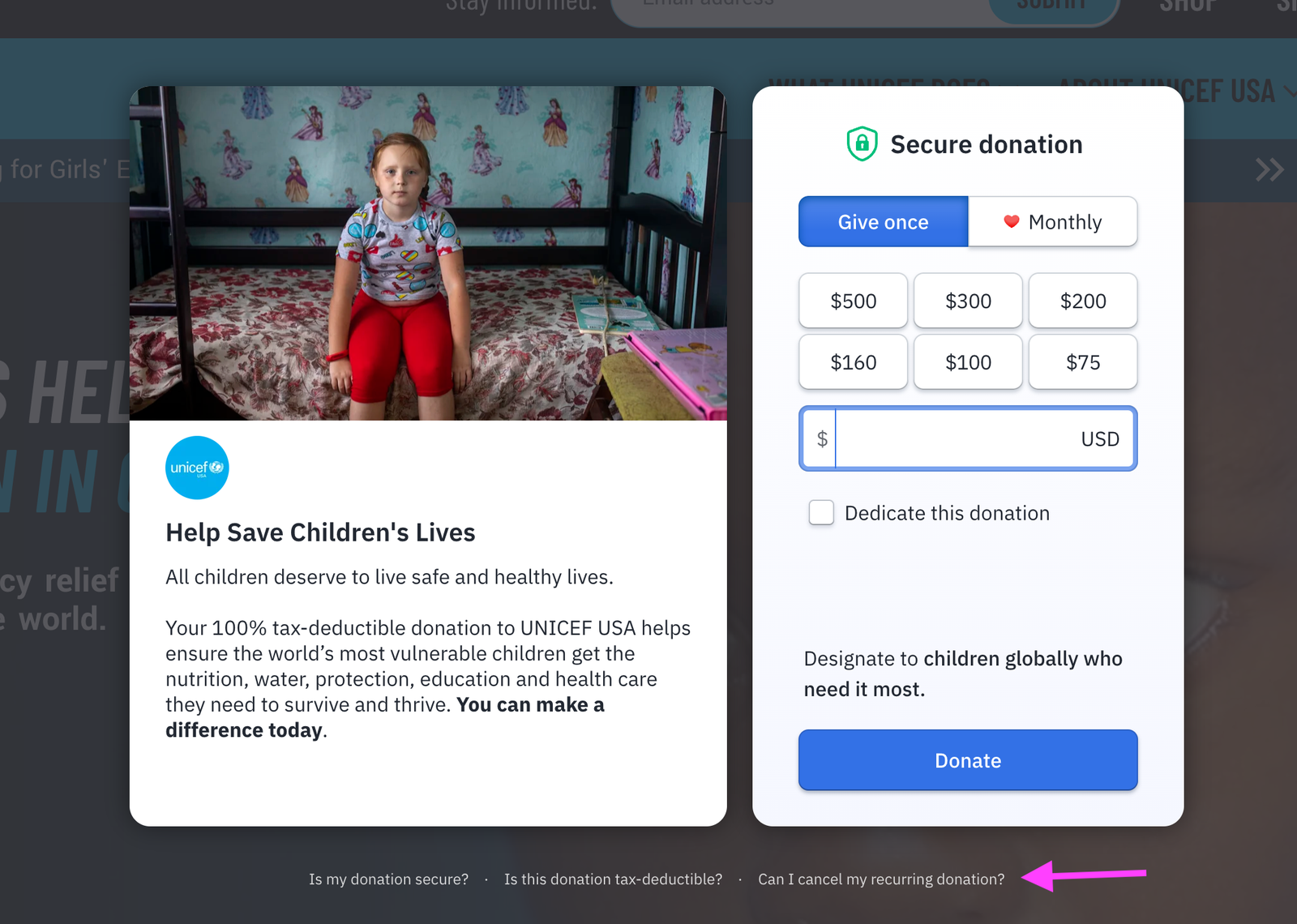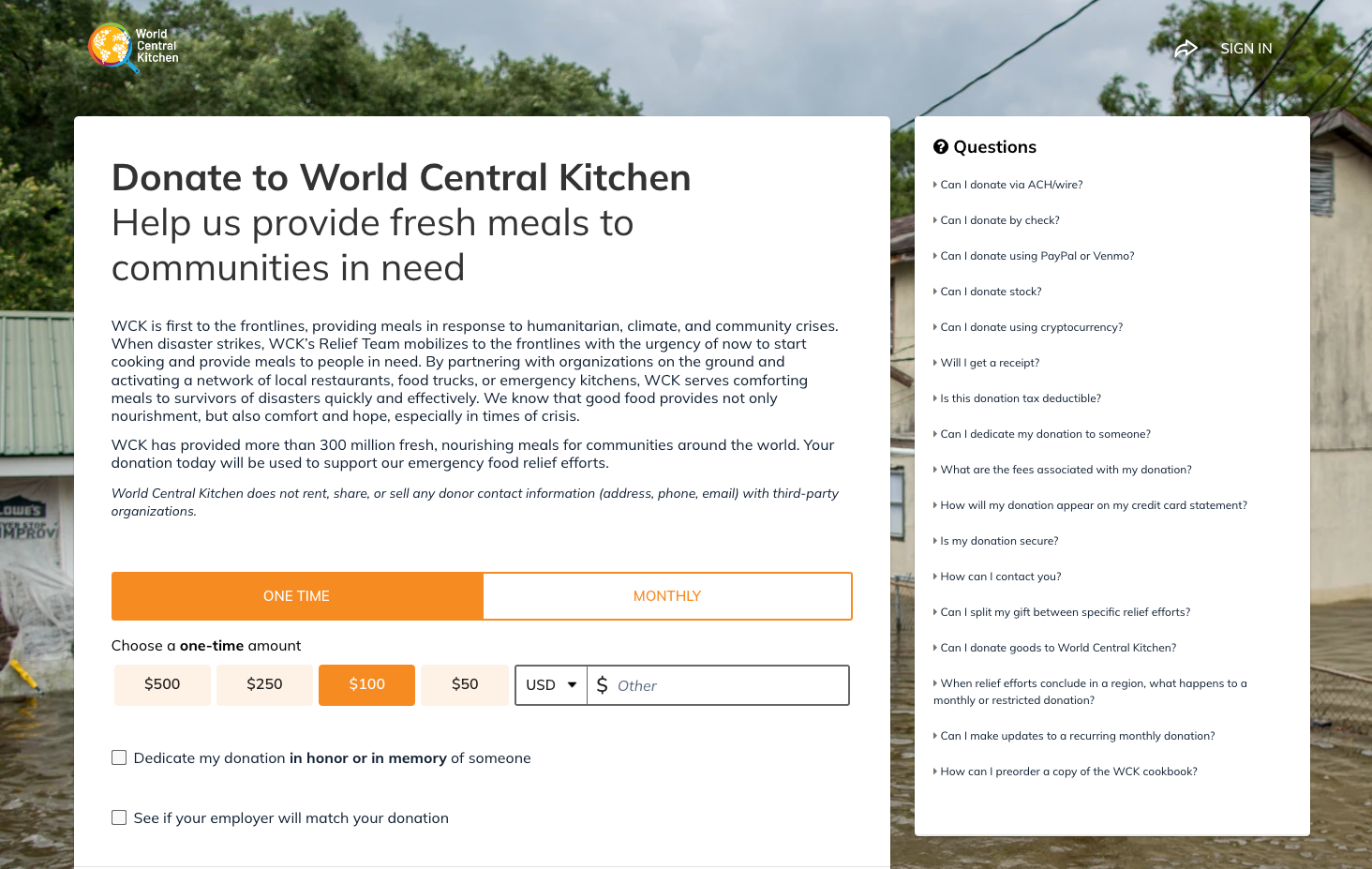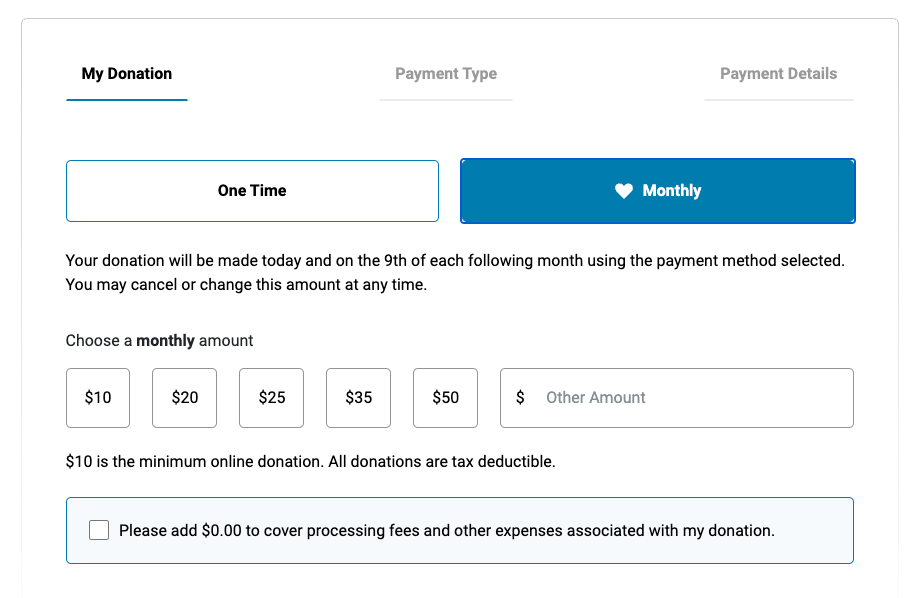I have this friend - we’ll call him Brian, because that’s his name. While on vacation in Mexico a while back, he was approached to make a charitable donation. He made what he thought was a one-time donation, only to find out later that he’d signed up to give monthly. Once he realized this, he tried to cancel the donation. But, cancelling turned out to be a complicated process that involved calling the organization between 10 a.m. and 3 p.m. on weekdays and speaking enough Spanish to navigate the process.
When you’re doing a good thing, like signing up for a monthly donation, it can feel a little strange to think about what might happen if you needed to stop doing it. It might not cross your mind at all. Realistically, though, there are times when you might need to cancel a recurring donation. Your financial situation could change. You might find other organizations you’d rather contribute to. Or, dark patterns may have led you to make a monthly donation you didn’t mean to make.
As we’ve seen, subscription products and services often include at least a little bit of information about cancelling in the sign up flow. But is that true of organizations that allow monthly donations? And if charitable organizations do include this info, do they do it differently than products and services?
To find out, I started with a UX review.
How I Went About It
I picked 10 national charitable organizations* of varying sizes that allow recurring donations.
To evaluate them, I set some ground rules:
- Most of the organizations I reviewed had more than one place to donate on their sites. I started from the homepage and chose the most prominent donation path - often the donate button in the main navigation or an embedded donation form on the homepage.
- I focused on how each organization presented information about cancelling and/or modifying recurring donations in the sign up flow, starting from the homepage or donation page, and ending when payment was required.
- I also looked to see if info about cancelling or modifying donations was easily accessible anywhere else on the site, like in FAQs, body copy, etc.
- I reviewed each experience on desktop, assuming the mobile donation experience would be similar.
There Are Some Patterns
- Every recurring donation flow is essentially the same.
All of the donation forms I reviewed asked for the same information in generally the same order: donation amount, contact information and payment information.
A few organizations added an extra step. The Salvation Army, Last Prisoner Project and National Domestic Violence Hotline all give the option of dedicating a donation to someone, and the Wounded Warrior Project allows donors to choose a thank you gift. The American Red Cross allows donors to select the programs they’d like their donation to support, which was a nice touch that made the donation feel a little more personal and impactful.
- The majority of the organizations I reviewed use third party donation services.
Eight of the organizations used fundraising services like Classy, Blackbaud, Fast Action, Charity Engine and Fundraise Up to manage their donations. Only two organizations - St. Jude and the American Red Cross - appear to have built their own donation systems.**
It makes sense - third party services offer CRM tools, conversion optimization, secure payments, donor record keeping and other features that can be expensive and difficult for a non-profit to build and maintain.
- It’s rare for a charity to include cancellation and/or modification in the recurring donation sign up flow.
Only two of the organizations I reviewed - the American Red Cross and UNICEF - mentioned cancellation in their sign up flows. And, only two organizations - the American Red Cross and World Central Kitchen - mentioned modification during sign up.
UNICEF is one of the only organizations I reviewed that included any cancellation info in the recurring donation sign up flow. It’s in the fine print, but it’s there.
A majority of the organizations did mention modification or cancellation in other places on their sites, often on pages about recurring donations, on contact pages, or in FAQs. There were only two sites - Last Prisoner Project and Wounded Warrior Project - where I couldn’t find any information about modifying or cancelling donations.
St. Jude does an excellent job explaining cancellation and modification at other points on their site. I’d be curious to A/B test a version of their donation form that includes (or connects to) some of the cancellation, modification and account info from the rest of the site against their current sign up flow to see what (if any) impact it has on conversions.
- Most donation forms default to one-time donations and give users the option to choose to donate monthly.
The exception is if an organization has a dedicated page for recurring donations - the forms on those pages default to monthly, and typically give users the option to switch back to one-time. This is how it should be - users should have to choose to set up recurring donations. Also, all of the donation forms I reviewed made it very clear whether you were making a one-time or recurring donation.
World Central Kitchen’s main donation form defaults to one-time donations. The bright orange tabs make it easy to tell which type of donation you’re making.
Defaulting general donation forms to monthly donations is a dark pattern that can encourage users to commit to giving more than they want to (or are able to). - A lot of charities let users manage their monthly donations through online accounts, but creating them isn’t typically part of the recurring donation process.
When I sign up for a subscription product or service, I generally assume that I’ll create an account during sign up that I can use to manage my subscription. But, when I’ve signed up for recurring donations, I haven’t assumed I’d make an account.
It could be because my mental model for recurring donations is so different than the one I have for subscriptions. Or, it could be because account creation wasn’t a part of setting up my donation. Maybe it’s because I’ve never had a need to cancel or modify those donations. It could be because I just assumed that I wouldn’t have an account and never investigated. All of these reasons are possible and could be interesting to explore.
I was pleasantly surprised that seven out of the 10 organizations had donor accounts. Donor accounts are often a feature of third party donation services - Classy, for example, allows users to create an account that lets them manage, modify and cancel their donations. While a few of the sites mentioned accounts (or had login buttons), it wasn’t always obvious that you could create an account during sign up. Only one of the sites I reviewed included account creation as an option when signing up for monthly donations. - Charities will often let you modify your donations, but not pause them.
It’s common for subscription products and services to allow users to pause their subscription for an amount of time, but it doesn’t seem to be common practice for donations. While the majority of the sites I reviewed made it clear that monthly donors could make changes to their donations, none of them gave the option to pause them.
Standout Experience: The American Red Cross

The American Red Cross provides critical services like like disaster preparation and relief, blood donations, health and safety courses, and more. They report that an average of 90 cents for every donated dollar goes directly to helping those in need.
It’s very easy to make monthly donations through their website, and they do a great job of explaining how recurring donations work and what they support. And, their site provides enough information to let me know that if I ever needed to change or cancel my donation, I’d have a path (actually, multiple paths) to do so.
- They mention both cancellation and modification in the sign up flow. The text is prominently placed, but doesn’t distract from the donation form. I also love that they mention when the monthly payments will be made.
- It’s cool that they let donors choose a specific initiative - like disaster relief, blood donations, or their local Red Cross branch - to support.
- It’s clear that donors have online accounts that they can use to manage their donations - there’s a sign in button in the utility nav, and the FAQs let donors know that they can change or cancel donations through their accounts.
- They have a monthly donation landing page that makes a compelling case for monthly giving and answers specific questions, including how to modify or cancel donations.
Charities could present cancellation and modification information the same way as subscription services and products do, but should they?
I don’t know.
The way we think about recurring charitable donations seems to be pretty different than how we think of subscription products and services.
In a quick Instagram poll that I ran, about 60 percent of people who make recurring donations said they hadn’t thought about what they would do if they wanted to cancel their donation. Compare that to when I asked what people wanted to know before signing up for a subscription product or service - 60 percent of those respondents mentioned wanting to know about cancellation policies.
Based on that limited data, people don’t think much about cancellation when they sign up for recurring donations, so including cancellation info might not be necessary. But what if including it made people feel more comfortable, and therefore more likely to donate? It would be a subtle change that could have an impact. Testing would need to be done to see whether or not adding cancellation and modification makes any real difference to conversions.
What Comes Next
These UX reviews have raised some questions that are worth exploring through additional research and prototype testing:
- Does the placement of cancellation information in the sign up flow matter, or is it just important that it’s there?
- Is there a way to word cancellation info that makes people feel informed and comfortable, but doesn’t cause cold feet?
- Would including information about cancellation in sign up flows for recurring donations make people feel more comfortable and willing to give monthly, or would it give them pause?
I’d love to explore all of these. If there’s one that’s particularly interesting to you - or you’ve got a specific question related to cancellation and recurring payments that hasn’t been raised, I’d love to hear it.
*Organizations I reviewed for this article include: ALSAC/St. Jude, American Civil Liberties Union, American Red Cross, Last Prisoner Project, National Domestic Violence Hotline, Salvation Army, Sandy Hook Promise, UNICEF USA, World Central Kitchen and the Wounded Warrior Project.
** Though, they could be using white labeled or third-party systems I wasn’t able to identify.
